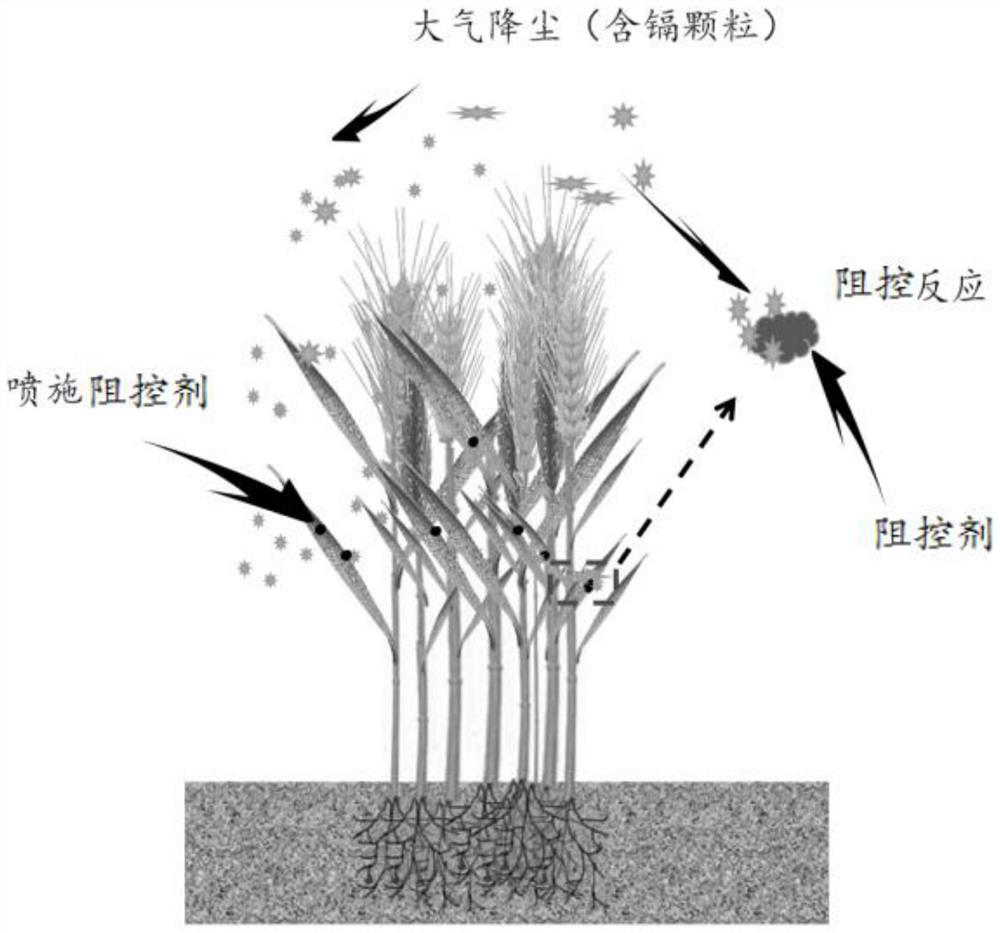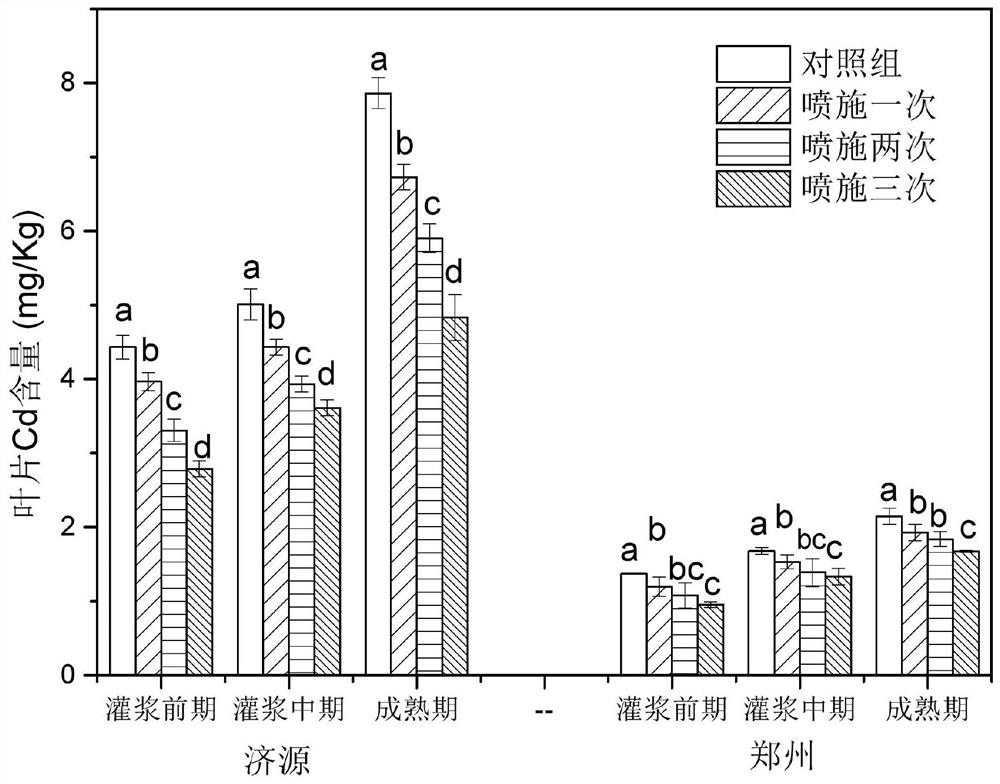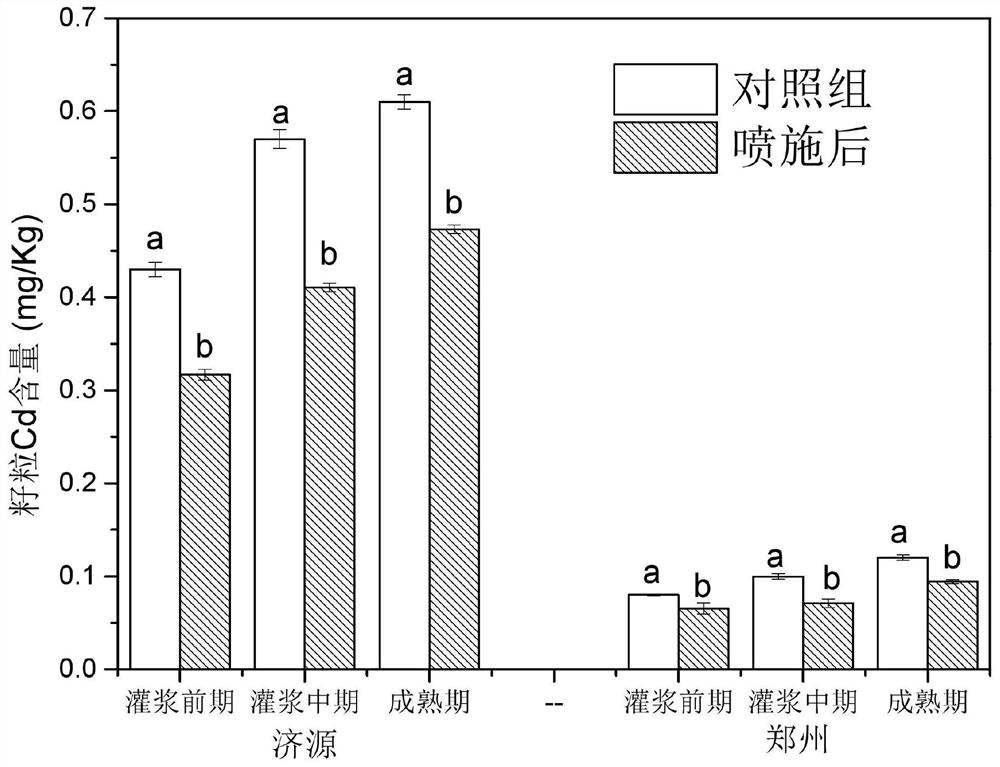A kind of foliar inhibitor for suppressing cadmium pollution of wheat atmospheric dust and its application method
A technology of inhibitors and foliage, applied in the field of environmental pollution control, can solve the problems of unstable control effect of Cd pollution in grains, reduction of Cd content in grains, excessive Cd content in wheat grains, etc.
- Summary
- Abstract
- Description
- Claims
- Application Information
AI Technical Summary
Problems solved by technology
Method used
Image
Examples
Embodiment 1
[0029] A foliar inhibitor for suppressing wheat air dust cadmium pollution, made of the following raw materials in mass percentage: humic acid 3%, Fe 3 o 4 @C-NH 2 Hollow microspheres 0.2%, alkyl naphthalene sulfonate 1%, lambda-cyhalothrin 0.5%, water 95.3%;
[0030] The preparation method of the above-mentioned foliar inhibitor for suppressing wheat air dust cadmium pollution comprises the following steps:
[0031] S1, made by weighing the following raw materials in mass percentage respectively: humic acid 3%, Fe 3 o 4 @C-NH 2 0.2%, alkyl naphthalene sulfonate 1%, lambda-cyhalothrin 0.5%, water 95.3%;
[0032] S2. Ultrasonicate humic acid in water for 30 minutes at a temperature of 20°C to obtain the first dispersion; add Fe to the first dispersion 3 o 4 @C-NH 2 Ultrasonic dispersion was carried out for 30 minutes to obtain the second dispersion liquid; alkyl naphthalene sulfonate was added to the second dispersion liquid to disperse evenly to obtain the third disper...
Embodiment 2
[0034] A foliar inhibitor for suppressing wheat air dust cadmium pollution, made of the following raw materials in mass percentage: humic acid 5%, Fe 3 o 4 @C-NH 2 0.2%, alkyl naphthalene sulfonate 2%, lambda-cyhalothrin 1%, water 91.8%;
[0035] The preparation method of the above-mentioned foliar inhibitor for suppressing wheat air dust cadmium pollution comprises the following steps:
[0036] S1, made by weighing the following raw materials in mass percentage respectively: 5% humic acid, Fe 3 o 4 @C-NH 2 Hollow microsphere 0.2%, alkyl naphthalene sulfonate 2%, lambda-cyhalothrin 1%, water 91.8%;
[0037] S2. Ultrasonicate humic acid in water for 30 minutes at a temperature of 20°C to obtain the first dispersion; add Fe to the first dispersion 3 o 4 @C-NH 2 The hollow microspheres were ultrasonically dispersed for 30 minutes to obtain a second dispersion; in the second dispersion, alkyl naphthalene sulfonate was added to disperse evenly to obtain a third dispersion; ...
PUM
 Login to View More
Login to View More Abstract
Description
Claims
Application Information
 Login to View More
Login to View More - R&D
- Intellectual Property
- Life Sciences
- Materials
- Tech Scout
- Unparalleled Data Quality
- Higher Quality Content
- 60% Fewer Hallucinations
Browse by: Latest US Patents, China's latest patents, Technical Efficacy Thesaurus, Application Domain, Technology Topic, Popular Technical Reports.
© 2025 PatSnap. All rights reserved.Legal|Privacy policy|Modern Slavery Act Transparency Statement|Sitemap|About US| Contact US: help@patsnap.com



